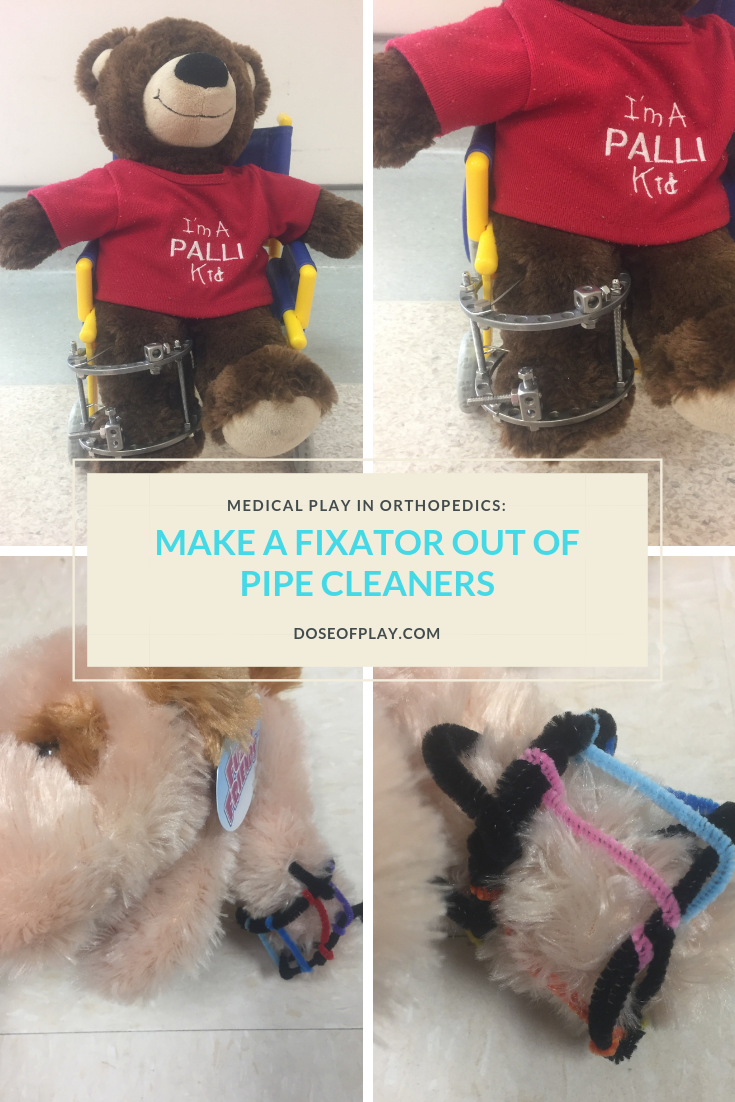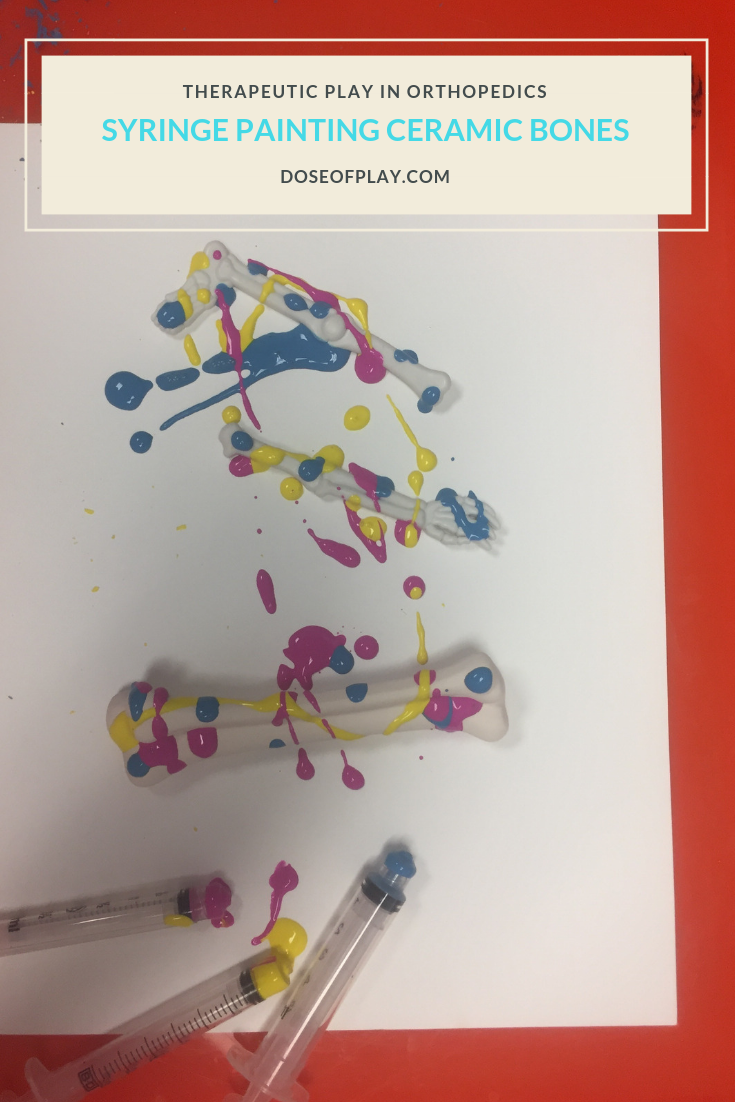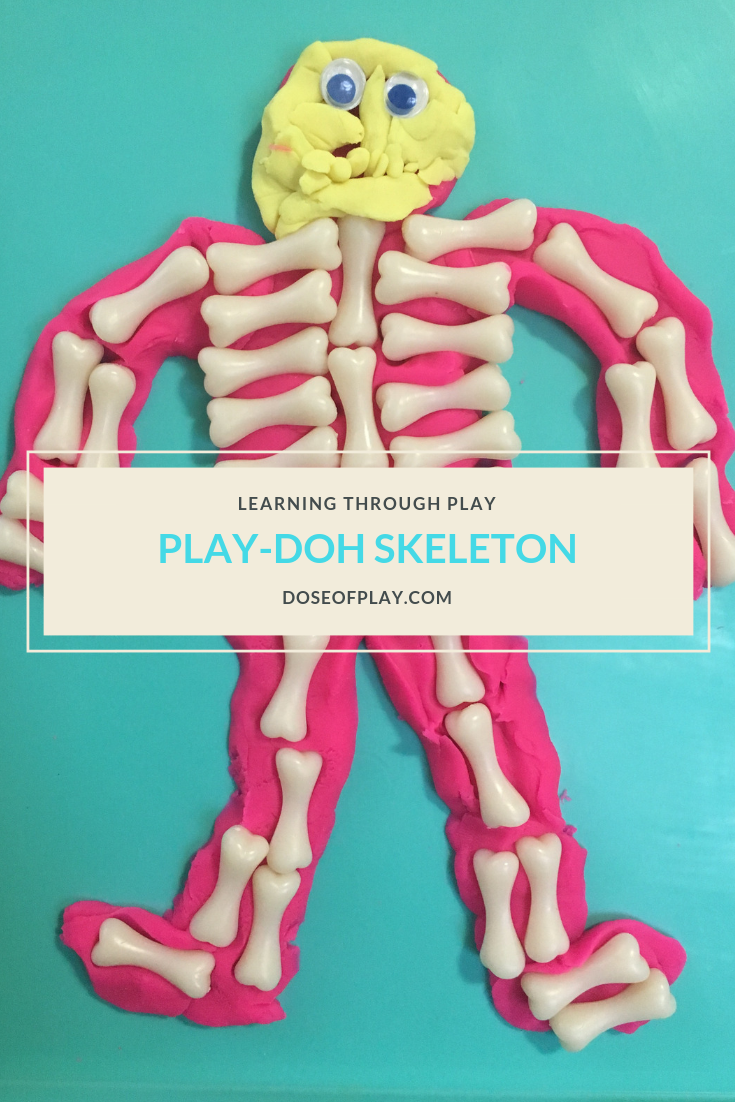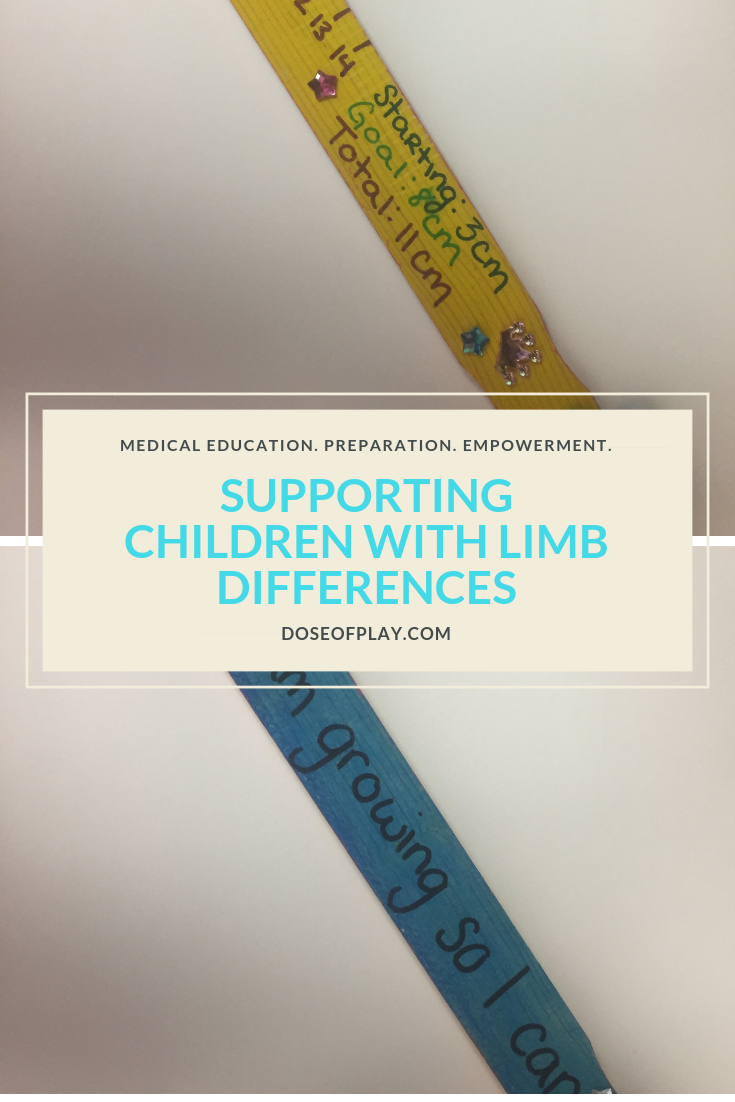Supporting children with limb differences
We all face challenges in life, including healthcare challenges. How we support children in mastering these challenges, rather than being defeated by them, gives strength to resiliency, courage, and enjoyment in life. Supporting a child with a limb difference is not always something we signed up to do, you may not have found out until birth, it could have been an acquired differences, or it is a limb length discrepancy that didn’t show itself until a noticeable difference in growth. Whatever the reason, I have found that these children are unstoppable. They find new and innovative ways to complete tasks in life, often overcoming odds and obstacles with a smile. My hope is that parents are also able to feel this sense of security in their ability to support their incredible child. This can be a challenge, especially when healthcare plans can include limb correction, lengthening, or amputation. So maybe that's the best place to start, caregiver surgery/procedural support.
Surgery/Procedural Support
You and your child may be facing questions on what to do with surgery. Navigating how to answer questions, provide explanations, and give emotional support can be difficult. On top of it all, you may also be facing fears of a surgery outcome, your child’s coping, or simply the logistics behind scheduling medical visits. The following tips are intended to help you feel more equipped to support your child who is having a limb lengthening surgery.
Honesty
As a Certified Child Life Specialist in orthopedic surgery, my number one rule is always honesty. Be honest with your child about what is going to happen. Sometimes we might be tempted to withhold information about going to the hospital, having surgery, or what their surgery will be like out of fear that they will have heightened fear and anxiety going into it.
However, in my experience, honesty:
Provides developmentally appropriate information to prepare for experiences
Minimizes anxiety and fear of the unknown
Maintains trust and confidence
Increases likelihood for a child to utilize positive coping strategies in recovery and future medical plans
Explains the purpose of the surgery with the child’s goals in mind
lengthening, so you can ride a bike
rotationplasty, so you can dance
limb correction, so you can play soccer
amputation, so you can walk with a new leg
The measuring sticks are used to measure the length of the rail fixators. The gap physically lengths from 3cm to 8cm, depending on the lengthening goal. I use them as an activity to discuss the reasons for lengthening, a physical reminder of their goal, and to see their accomplishments. In physical therapy, we do a lot of measuring that can be difficult. This is a way to ease through this process. Plus children are able to express their view of lengthening through this artistic process. While their limb difference doesn't stop them from being able to dance, we are lengthening for a purpose, so finding the child's motivator for their lengthening is important. - Jessie, Certified Child Life Specialist
2. Education through play
It is easy to disregard the child’s ability to comprehend in depth medical information due to assumed development, however children are constantly learning and taking in information around them in multifaceted ways. We can support them receiving developmentally appropriate information and guide their roles and abilities to learn. Providing a high level of honesty includes explaining surgery or procedure on the child’s developmental understanding. Often times, this includes a level of play. Children use play as a primary modality to process information and learn about the world around them. Thus, presenting information in the form of play can be a space place to normalize the medical experience, rehearse upcoming events, and explore questions they have.
Consider using play to help them learn.
Children’s books are relatable, offer demonstration of how the character overcame a challenge, and are wonderful visual aids for a child to see and examine what will happen. When read over and over again, it helps the child build mastery over their experience during their own pretend play or…
Rehearsal of their upcoming medical experience: Pretend practice going to the hospital, operating room, and waking up in recovery with their favorite stuffed animal. Reach out to your hospital to see if a pre-op tour can be scheduled with the child life (or sometimes nursing) team.
Use chocolate skeleton molds to do your own chocolate surgery
Make a fixator out of pipe cleaners for Barbie or action figure
Model amputation or rotationplasty on a stuffed animal
Play with real external fixator (or parts) with toys to normalize the equipment
Syringe paint miniature ceramic bones
Make a skeleton out of play-doh



3. Give Back Control
Going to the hospital can threaten a child’s sense of autonomy. As children develop, they gain more independence as they master new skills. When hospitalized, not only is their routine often out of sorts, but these milestones are often impacted due to the ebb and flow or policies within a healthcare institution.They are told what to wear (hospital gown), what to do (taking vitals), and face food, drink or mobility restrictions. That sure can be frustrating!
Whenever possible, give the child back some control in this powerless environment:
What would they like to wear home after surgery?
What would they like to bring with them to surgery? Favorite blanket or stuffed animal?
What should we do waiting for surgery? Coloring? Play Uno?
What should we do going back to the operating room? Listen to music? Blow bubbles? Play on a tablet?
Do you want to watch or look away during a procedure?
Who’s hand do you want to hold during the procedure?
What color cast do you want?
Is their stuffed animal receiving surgery too?
Will their external fixator have a name? (I love hearing the different names children come up with, it helps them to build a more positive relationship with their experience and gives an outlet to talk about their experience by naming it)
Common Concerns
Will it hurt?
This question is always difficult to answer because that is about perception and we all experience things differently. It isn’t a yes or no answer but rather one to explore with the child. What is their experience? Have they done this experience before that leads them to believe that it would hurt? If we are providing answers, use non-threatening developmentally appropriate words such as:
“Poke” instead of “needle”/”shot”
“Warm and tingly” instead of “burn”
“Pushing” instead of “pressure”
Help distinguish between muscles feeling “sore”, “tight”, “tired” or “hurt”
“Stickers that feel cold and tingly” instead of “ESTIM pads”
One of my favorite ways to find a solution is to lead with the statement “I wonder” such as “I wonder what we can do to make it feel better”. This give the child an opportunity to work to a solution instead of being told “not if you hold still” or “it will if you keep worrying about it”. Positive context for the child is essential.
2. I am scared.
Yes! We are probably all scared about some aspect of our lives! being scared is a completely normal reaction! We can’t dismiss a child’s emotion, they will still have that emotion but now added with a sense that they are wrong to even have it with no solution to work through it. Whatever we repress, we will eventually express. Exploring what they are scared about can give insight to their experience and how to support them. Is it certain stretch in their rehabilitation that they are scared of? It is having to do a particular procedure that is scary? Goal is not only to calm a child, the goal is to teach a child to connect with themself in the midst of whatever is going on with their body. This can more effectively lead to the child becoming calm.
Use validating and supportive statements such as:
I hear you that you are scared
I am here to help you
You can be scared and brave
New things can feel scaring (i.e. walking, weight bearing, transfers)
I wonder what we can do to help
You can do hard things
Even though it was hard/scary, you didn’t give up
3. Why me?
This is a tough one. And every parent knows their child best to answer this deep questions when asking why they must have a limb difference. Here are some important takeaways for children to know that can help explore and work through this tough question.
Being born with a limb difference is not their fault.
It’s not something their friends can catch like a ‘cold’.
Everybody’s body is different.
Even though everyone experiences life differently, we can still play and have fun.
Encourage peer supports with children or mentors who may have faced similar experiences (look for Lucky Fin Project or Limbs4Kids)
Having a limb difference is just one part of who they are, they can also be a good friend, a hard worker, a dreamer, video gamer, dancer, singer, swimmer, etc.
Limb differences do not prevent our personal goals, independence, or aspirations.
Resources
1.Books
My Little Leg Grows Bigger by Robyn Lambert
Uniquely Me by Trace Wilson
Scars by Susan Foley
Purr-fectly Lucky by Kimberly Palmucci
Will The One-Winged Eagle by Jimmy Curran
Look What Kate Can Do One Hand Works as Well as Two by Katie and Paul Leatherwood
Follow Dose of Play on social media! Click the links below for more tips and resources.
Dolls
A Step Ahead Prosthetics provides fee limb amputation and real prosthetic to American Girl dolls (you must provide your own) to match that of a child
Jessie Smith is a Certified Child Life Specialist focused in limb saving orthopedics providing psychosocial support for children with rare orthopedic conditions through surgery preparation, rehabilitation interventions, and caregiver support groups.






